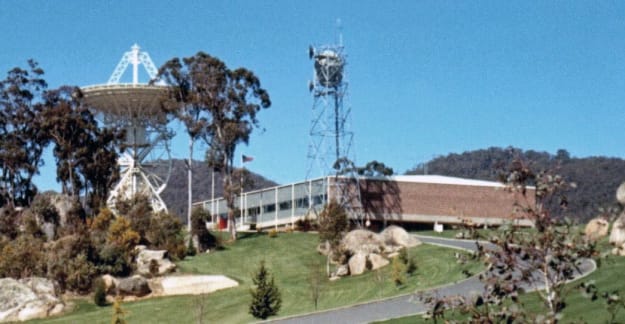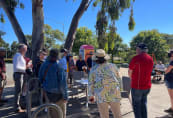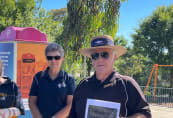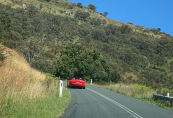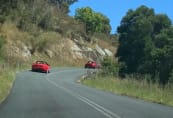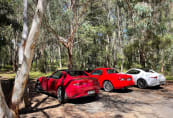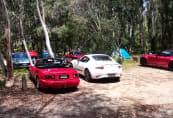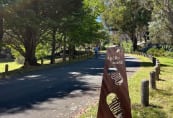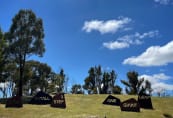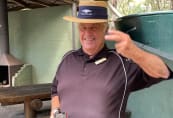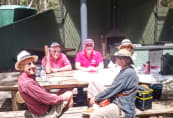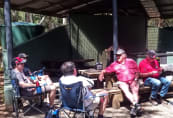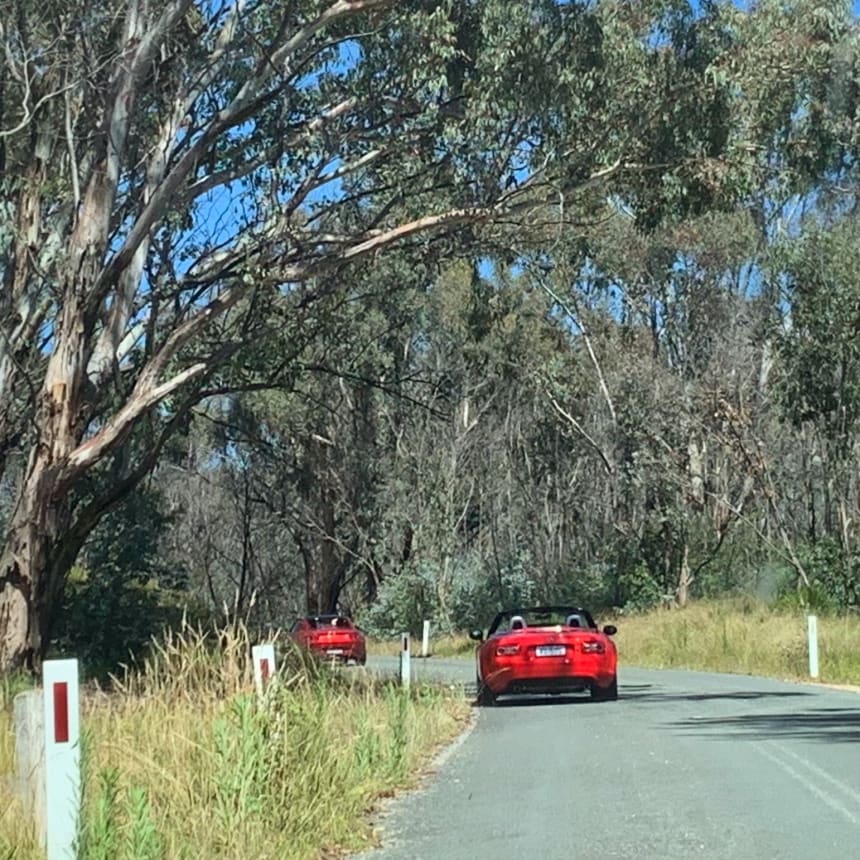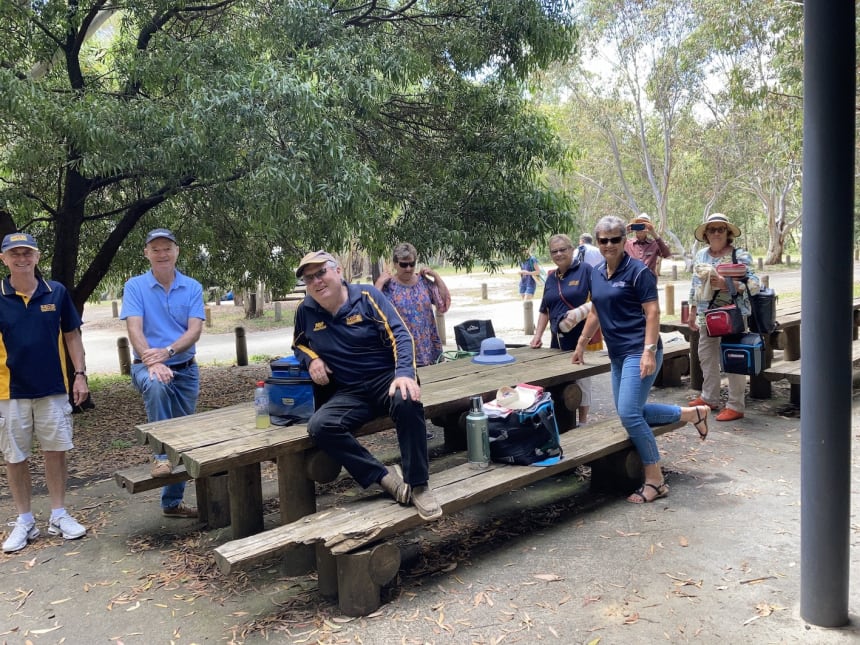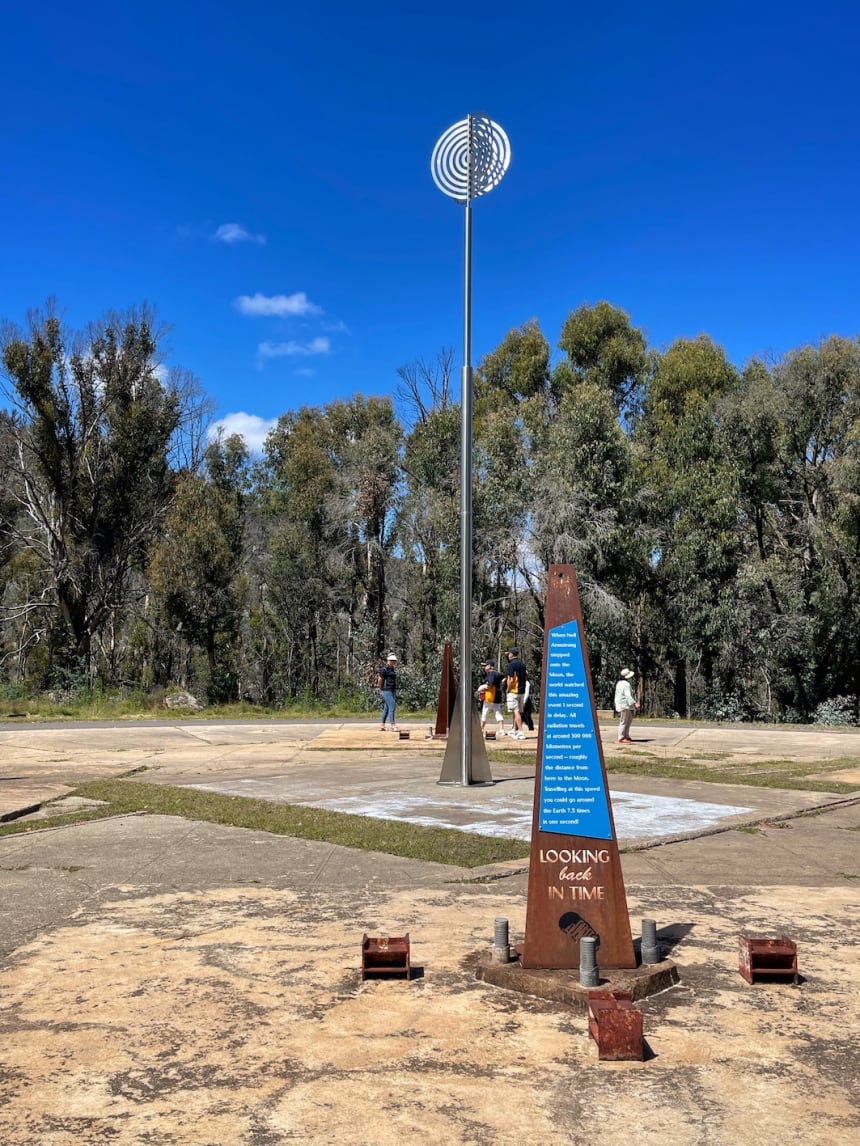Tracking History at Honeysuckle Creek
22 February 2022 / Words by Mike Lawless & Rod Nicholas. Photos by Mike Lawless, Rod Nicholas & Barry Matson
We had a perfect Canberra summer day for our run to Honeysuckle Creek campsite.
We met at the Duffy shops late morning. There was a good turn up and enough cars to make an impressive display in the car park.
We travelled out the Cotter Reserve and passed the Cotter Dam which was releasing a fine volume of water into the Murrumbidgee. We then drove on to Tharwa and then further south. The sign at the tracking station turnoff at Apollo Drive had been removed but none of us was fooled and we all made the turn and climbed up the winding road to our destination on a perfect MX-5 road.
After just under an hour after leaving Duffy, we arrived at Honeysuckle Creek.
Honeysuckle Creek is high in the catchment area to the south of Canberra, about twice the height above sea level as Canberra. It’s sparkling sunlight, pristine bush and crisp mountain air makes it a lovely place and, with the fine winding roads to get there, it’s a great MX-5 destination.
There’s not a lot left of the Tracking Station now, located in the depths of Namadgi National Park, but it's a great drive to get there. Even better with the perfect weather we experienced.
We spread ourselves out at the BBQ enclosure that provided a comfortable and protected picnic site which we took full advantage of.
This site once housed the tracking station which played a role in various space missions. The Tracking Station was officially opened in March 1967 and closed in December 1981. The antenna was dismantled and moved to Tidbinbilla, where it became Deep Space antenna 46. Almost lost to history, all that’s left now are concrete pads where once stood the antenna, operation building and other structures. There are explanatory sign boards, of course, with a few photographs, but they convey little of the wonder and excitement the facility generated.
The Tracking Station was part of NASA’s Manned Space Flight Network and formed a vital link in the Apollo 11 moon landing in July 1969. As the Canberra Times reported:
While the dish at the New South Wales town of Parkes sticks in the collective memory as the radio telescope that received the moon-landing footage and beamed it around the world, the first eight minutes of grainy footage actually came from Honeysuckle Creek, a 26-metre-diameter dish surrounded by Australian bush.
It was a moment that changed history, marked a new frontier in space exploration and technology, and is remembered around the world for the iconic images of a man walking on the moon.’ [https://www.canberratimes.com.au/story/6267686/canberras-small-steps-behind-the-one-giant-leap/]
The following comments come from ‘Honeysuckle Net’, a tributary website dedicated to the men and women of Honeysuckle Creek Tracking Station:
[When the station closed down] There were no farewells, no speeches, no parties, no wakes. All the equipment was removed, we pulled the last of the cables out, stacked the boxes, and walked out the door. During its short but glorious life, Honeysuckle Creek distinguished itself as a top station around the world in two completely different spheres – as a Manned Space Flight Station attached to the Mission Control Center in Houston, Texas, and then as a Deep Space Station attached to the Jet Propulsion Laboratory in Pasadena, California.
I visited the building a few years after it had been closed. It had been attacked by vandals – smashed panels, broken bricks, and litter lay around the floors. I walked down the main corridor and remembered the many times I had walked down it carrying a Styrofoam cup of coffee to the sound of voices on the Moon’s surface, or running down to the canteen for a quick meal.
I stood there for a while – looking at the slight glow of daylight from the one window looking out on the old antenna pad, throwing just enough sombre, grey light over the floor, walls and ceiling to make out the rooms.
… [On a later visit] The buildings were gone.
They were completely demolished in June 1992 when no use could be found for them and were regarded as a hazard to visitors.
I also realised that gone were all the excited voices radiating to us from above the atmosphere, telling us about the unknown; the new experience of living in weightless space; the stupendous views of Earth from great distances away, just a blue ball suspended in the void; descriptions of another world, the wondrous though alien world of the Moon. Those who follow already know what to expect. An exciting, never-to-be-repeated era had passed into history.
There is much more information available at https://honeysucklecreek.net/index.html, including a short video of the drive up there in 1968. Apart from the dirt, and the boulders on the road, and the land slips, the scenery is remarkably familiar. Do yourself a favour and read up on it!

